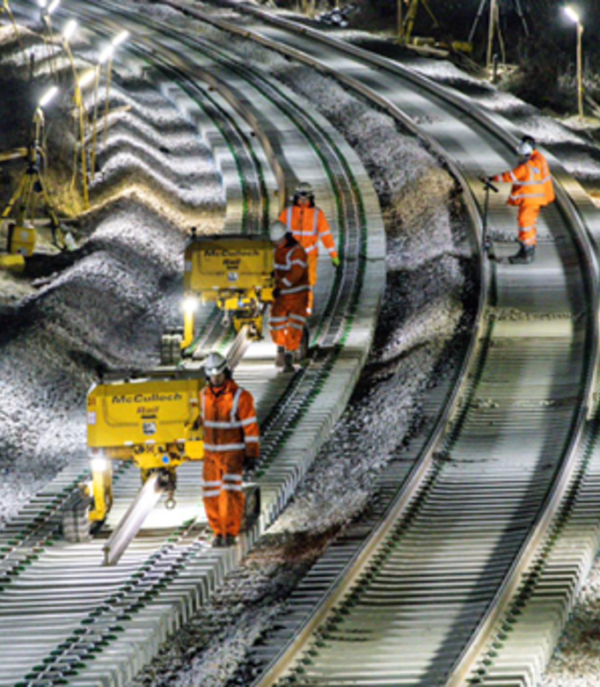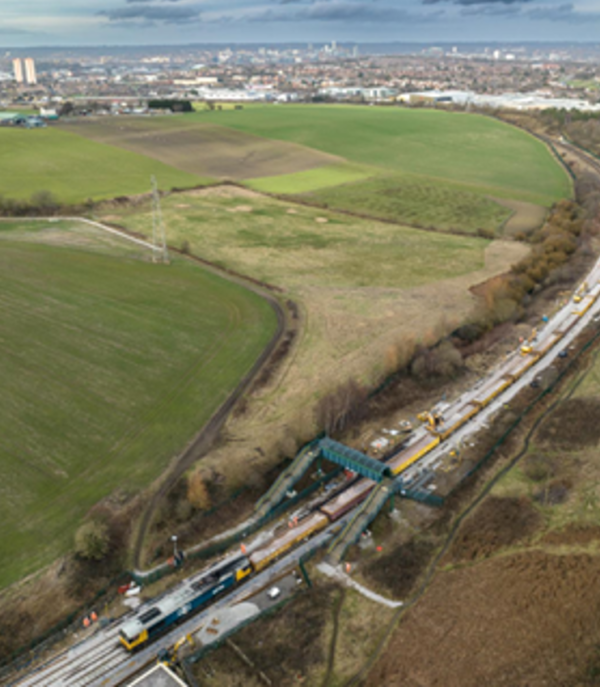

Spanning 76 miles between Manchester, Leeds, York, Selby and onward to Humberside, the Transpennine Route Upgrade (TRU) is a £multi-billion-pound railway investment programme that aims to transform journeys for passengers.
TRU consists of three programmes: TRU West, Leeds Central and TRU East. The TRU West Alliance, are responsible for delivering the improvements between Manchester and Leeds, and is formed of Network Rail, Amey, Arup, BAM, Siemens and an ecosystem of 15 key supply chain partners, which includes D2. Project W4 between Dewsbury and Copley Hill comprises two distinct phases.
Phase 1 – Capacity increases including signalling recontrol via York Route Operating Centre, a new crossover at Batley, Morley Station relocation, local track renewals, and level crossing enhancements.
Phase 2 – Track and tunnel improvements to enable electrification.
The ultimate objective was to deliver Phase 1 using a mixture of Rules of the Route (RoTR) and Disruptive access including two 9-day Dewsbury to Leeds blockades between Autumn 2022 and Summer 2023.
To support the design and delivery of the project within railway access available, we selected experienced in-house programme management experts with a holistic understanding of how to deliver major infrastructure projects due to their extensive experience of the railway industry processes and stakeholders.
Our personnel, accounted for over 60% of the W4 Phase 1 Integration Team including a Senior Project Manager, Scheme Project Manager, Project Management Assistant, Construction Assurance Manager, and a Utilities Manager.
We have developed a strong industry-wide reputation for deploying experienced, multi-disciplined project management staff at every level. Our people adopt a holistic approach to collaboration, using client and supply chain experiences to successfully deliver major projects. Beyond this, we have a capability to deploy staff who can support complex major programmes, adding value by enabling us to seamlessly manage risk. These capabilities include planning and programme controls and reporting, risk management, common safety method, network operations, driver training, utilities management, and construction and engineering assurance management.
The very short timescale between our assignment to the project and the disruptive possessions and blockades meant that our project management team needed to quickly establish the DWWP operational readiness framework that would optimise the efficient use of possession time. We balanced this work against the risks associated with overrunning (not least of which were potential impacts on both the travelling public and freight movements). Leading the DWWP process we chaired Readiness Reviews from T-52 to T+4 weeks for multiple possessions and the 9-day blockade. In parallel with the Readiness Reviews, we chaired weekly reviews with discipline engineers and specialists to clearly communicate the data outputs to the Senior Leadership Team and peer reviewers.
Stakeholder Engagement and Management was critical to the success of the project. Prior to the blockade we attended Industry Readiness Reviews to collectively engage Network Operations and Maintenance teams and Train and Freight Operators. The reviews helped coordinate wider rail network activities during possessions. Working with the Design, Construction and Consents Teams we also gained local authority planning approvals and organised street works notices.
Collaborating with the wider W4 Project Team we assessed the works planned for the possessions, tracked the evolution of these activities, and led deconfliction workshops to support the Principal Contractor. Throughout this time, we positively challenged all parties planning to work within the possessions, to ensure all precursors were in place before works began at worksite and possession levels. We led Quantitative Schedule Risk Assessments (QSRA) on the hour-by-hour blockade schedule to identify and manage the risk of possession overrun, reporting status updates to Alliance and Network Rail senior managers.
To support communication, we produced critical Blockade Management Plans and Contingency Plans which provided the Construction Teams, Network Rail Operations and Maintenance with a single suite of reference documents covering the possessions and blockade.
In advance of the blockade, we established an EiS Control Room in Batley, integrating scheduled programme milestones with the in-person application and sign off of acceptance forms – centralising documentation storage and control. We also formed and managed the mission control team (MCT – also based in Batley) that tracked, reviewed, and updated the schedule in real time against planned and completed activities and decision points. The MCT produced 4-hourly reports to the Alliance at Silver and Bronze command levels and chaired daily industry conference calls and 12-hourly Alliance calls. During the blockade our project management team and Construction Assurance Manager arranged onsite AMP reviews to enable staged asset handover to the Route Asset Management or Maintenance Team. This smoothed the commissioning process and the hand-back of assets. This all culminated in being able to hand back all of our possessions and blockades on time with no delays.
The 9-Day blockade was split into two stages. The Batley crossover and demolition of an overbridge (within the interfacing Project W3 footprint) took place in the first 53 hours. After this the possession limits were reduced to allow trains to run into Batley Station and turn back. The second stage accommodated the signalling recontrol saw, the footbridge opening, temporary level crossing closure, and platform demolition, drainage and track renewal/realignment, and new platform commissioning at Morley Station.
We produced the Project Authorisation Strategy defining requirements for Authorisation or Intermediate Statement of Verification under the Railway Interoperability Regulations in line with the Common Safety Method. This allowed the project to evidence the following deliverables under the EiS checklist: Engineering Deliverables & Compliance Certificates, TSI-specific evidence, Maintenance/ TOC consultation where necessary, Safety Assessment Report, Declaration of Control of Risk, Interim Statement of Verification and Authorisation. This information was all required to support commissioning of the completed assets.
Working with Network Rail’s Communications and Community Relations Team we planned and issued periodic leaflet drops to lineside neighbours and held community events where members of the public could meet the project team to find out more and share any concerns. As the various assets became operational, we maintained an onsite presence to assist members of the public. We were also responsible for arranging VIP visits to the site by the Department for Transport or Industry stakeholders.